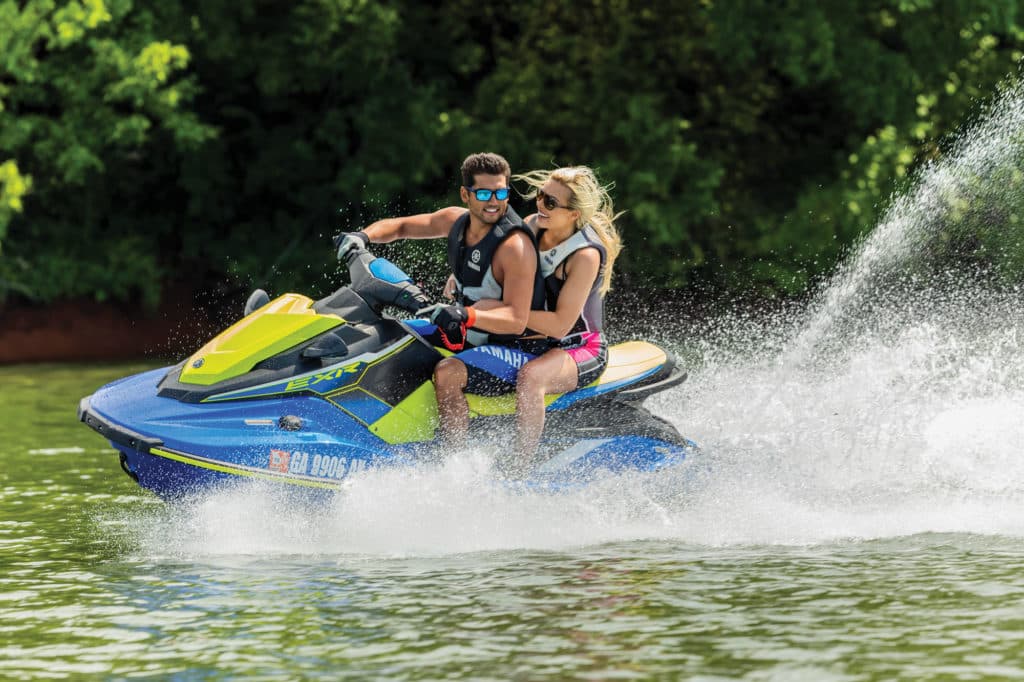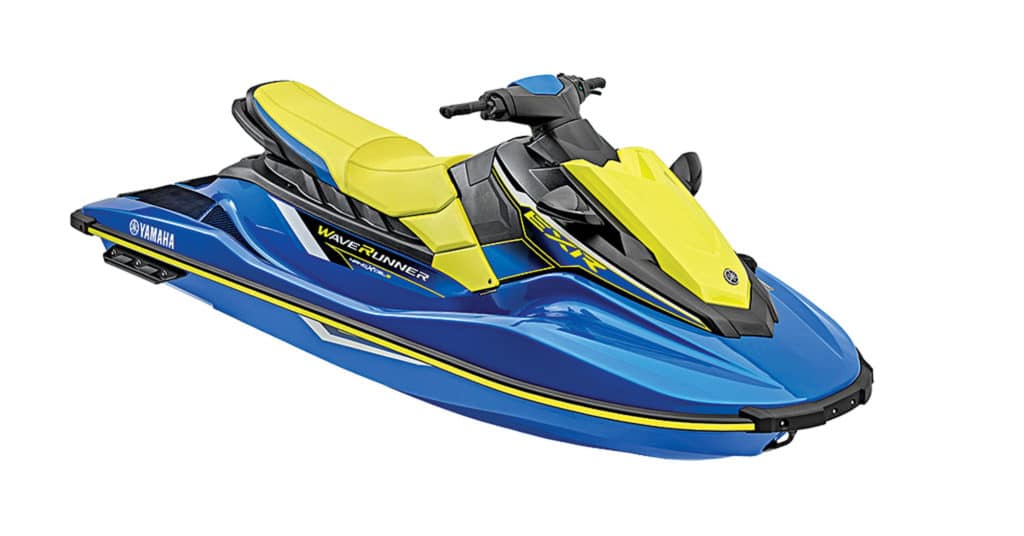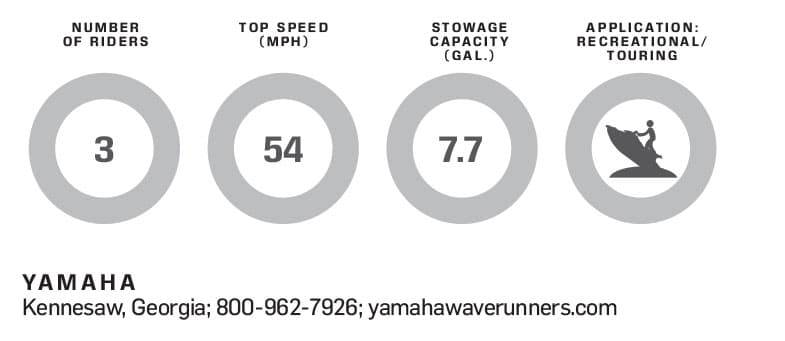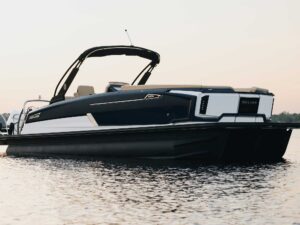The launch of Yamaha’s EX series marked the brand’s long-awaited entry into the competitively priced “Rec Lite” class of personal watercraft. The EXR takes all that was special about those fun recreationally minded earlier models and adds a dose of horsepower. The result is a spirited craft that still keeps costs in check while providing Yamaha’s trademark reliability.

The power that tacks that R onto the model name comes from of a new engine-control unit added to the current three-cylinder 1,049 cc EX engine. The new ECU bumps the EX’s previous 100 horsepower to the EXR’s current 110. The new engine also out-revs the existing power plant by 700 rpm, topping out at an even 8,000 rpm. Other additions include a top-loader intake grate to better supply the pump, and a 40 mm pump extension to improve response times, giving a sportier feel to the EXR’s handling.
The all-important horsepower-to-weight ratio is further improved by a change in the EX’s normal hull- and deck-construction material. NanoXcel 2 is Yamaha’s lightest version of its fiberglass-based Sheet Molding Compound (SMC), and it’s the same material used to fabricate Yamaha’s flagship craft. The change drops the craft’s weight to 540 pounds, about a 60-pound savings over the closest EX model. The result is an increased top speed of 54 mph, but also more aggressive acceleration through the low end and midrange of the power band. The feel on the water is noticeably more playful and responsive.

This craft’s coolest feature, however, just may be RiDE, Yamaha’s innovative dual-throttle system. RiDE adds a second throttle lever to the left side of the handlebar, which supplies reverse power by redirecting thrust via the reverse bucket at the pump. At low speed, it simplifies docking and close-quarters maneuvering by simplifying forward-reverse shifting to just intuitive pulls on the forward and reverse levers. Release both levers, and the craft mimics neutral, diverting thrust just enough to prevent any forward or backward movement. RiDE also comes into play at speed. Pulling the lever drops that reverse bucket into the forceful jet of water leaving the pump, cleverly deflecting it forward and to the sides to produce rapid deceleration. This could help avoid an obstacle or just slow in advance of a quick corner while maintaining a level attitude.
High Points
- A 7.7-gallon storage capacity is split between bow compartment and oversize glove box.
- Dual rearview mirrors, pull-down boarding step, cut-and-sew saddle construction, two-tone deck mats.
- Capacity for up to three passengers.
Price: $9,299

How We Tested
Engine: TR-1 High Output 1,049 cc Yamaha Marine Engine
Pump/Impeller: 144 mm high-pressure pump with stainless-steel impeller
Gear Ratio: 1.00:1
Fuel Load: 13 gal.
Crew Weight: 155 lb.
Yamaha – Kennesaw, Georgia; 800-962-7926; yamahawaverunners.com









